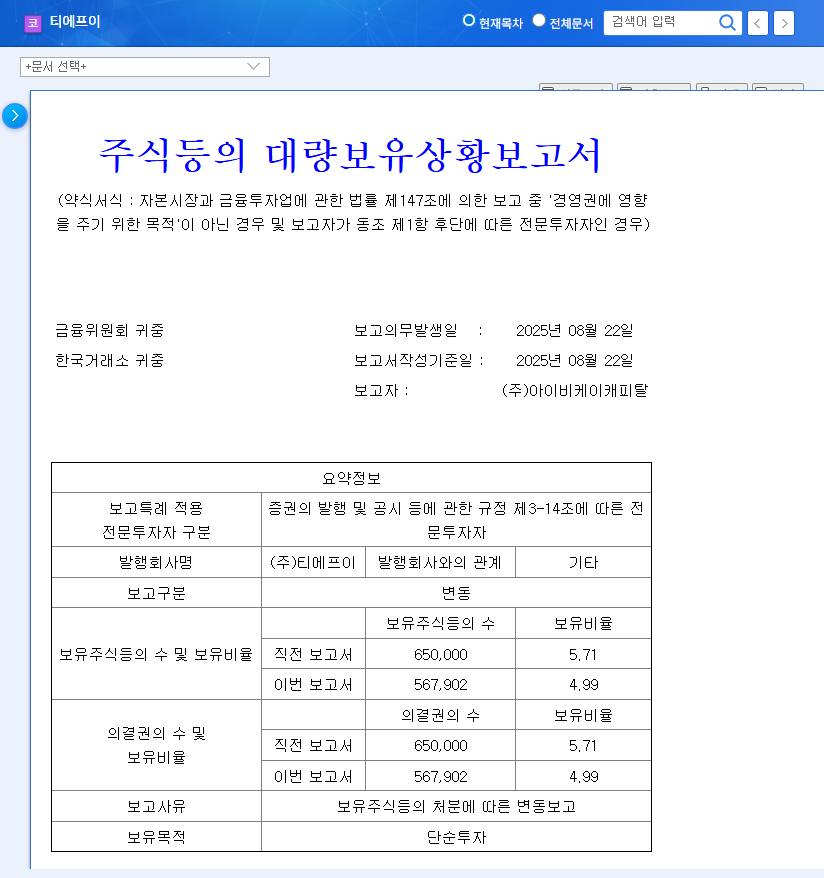
1. TFI IR: Key Takeaways
TFI’s investor relations (IR) session is scheduled for 10:30 AM on August 27, 2025. The primary focus will be on sharing the company’s current business status and enhancing investor understanding. Presentations on future growth drivers like 2.5D/3D package test solutions, large-area chip testing, and entry into the high-performance memory market are anticipated.
2. Why Invest in TFI? – Key Investment Highlights
TFI holds a unique position as the only company in Korea providing COK, Test Board, and Test Socket, all essential for the semiconductor testing process. This translates to a strong competitive edge. Their robust customer relationships with major semiconductor companies and international standard certifications further strengthen their position. TFI’s solid financial performance in the first half of 2025, with sales of KRW 47.073 billion, operating profit of KRW 6.896 billion, and net profit of KRW 6.180 billion, demonstrates stable profitability. Continuous R&D investment and proactive facility investments further solidify their future growth potential.
3. Investment Considerations: Potential Risks
Potential investors should consider factors such as foreign exchange volatility, dependence on major customers, and the cyclical nature of the semiconductor industry. Fluctuations in exchange rates can directly impact earnings, and the high concentration of sales from specific customers requires careful consideration. Continuous monitoring of the potential for a downturn in the semiconductor industry is also crucial.
4. Investor Action Plan
- Carefully analyze the information presented during the IR, paying close attention to new technology developments, next-generation market entry strategies, customer relationships, and risk management plans.
- If the announcements meet market expectations and reinforce the growth narrative, consider a buy position in anticipation of potential short-term stock price appreciation.
- Continuously monitor risk factors such as foreign exchange rates, customer concentration, and semiconductor industry cycles.
What is TFI’s main business?
TFI specializes in semiconductor test solutions, being the only company in Korea that supplies COK, Test Board, and Test Socket.
When is TFI’s IR scheduled?
TFI’s IR is scheduled for 10:30 AM on August 27, 2025.
What are the key investment risks associated with TFI?
Key risks include foreign exchange volatility, dependence on major customers, and semiconductor industry cyclicality.

